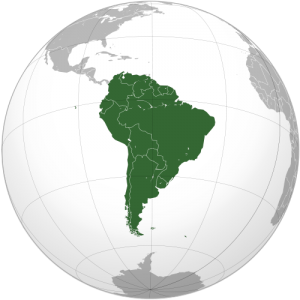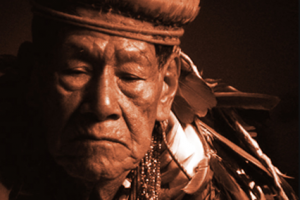 Population of South America 2014
Population of South America 2014
Based on the approximate average annual population growth of 1% and the previous population, the population of South America in 2014 should reach about 389,860,000 people. As a result, South America remains the fifth most populous continent in the world, in front of Australia and Antarctica. In total, there are thirteen sovereign states, four partially sovereign states, and two dependencies in South America. The country with the largest population in South America is Brazil, reaching over 195 million people in 2013. Brazil is also the largest country in terms of area, making up 3,287,612 square miles of land. The least populated country is South Georgia and South Sandwich Islands (United Kingdom dependency), made up of 20 people. It is also the smallest country in terms of land area, only made up of 1,194 square miles. Lastly, the majority of the population lives on the western and eastern coasts compared to the southern coast and the interior of the country.
Languages of South America 2014
The most widely spoken languages throughout the continent of South America are Portuguese and Spanish. Over 50% of the population speaks Portuguese, but the number of Spanish speakers is close behind the number of Portuguese speakers. Portuguese is the official language of Brazil, while Spanish is the official language of most countries. However, Dutch is the official language of Suriname and English is the official language of Guyana. Despite these major languages, there are still many prominent indigenous languages spoken throughout South America. Some of these languages include Quechua, Wayuunaiki, Guarani, Aymara, and Mapudungun. Quechua, Guarani, and Aymara are recognized as national languages in at least one of the countries.
South American Geography
South America, almost primarily in the Southern Hemisphere portion of the Western Hemisphere, makes up the southern part of the American landmass. The northern border of South America is traditionally determined by the Colombia-Panama border along with the Atlantic Ocean and the Caribbean Sea. Due to the shape of the continent, it has the least amount of coastline of any continent in the world. South America is characterized geographically by some of the most extreme geographic features in the world. The highest waterfall in the entire world is found in Venezuela, South America, known as Angel Falls. It also has the highest single drop waterfall in Guyana, known as Kaieteur Falls. The Amazon River is the longest river in the world and the Andes Mountains are the longest mountain range in the world. The driest place on earth is the Atacama Desert, and in contrast, the largest rainforest is the Amazon Rainforest. Lastly, some of the most important minerals and resources in South America are gold, copper, tin, petroleum, silver, and iron ore.
Economy of South America 2014
Unlike most continents in the world, South American does not heavily rely on exports for their economy. In fact, compared to the average of 25% of GDP being exports, only 16% of South America’s GDP comes from exports. But, Brazil is the country in South America that has the largest amount of exports in the continent. As of 2011, their total sum of merchandise exports was about $251 billion. The largest nominal GDP throughout South America is also Brazil, totaling $2,492,908 in 2011. However, Brazil’s economy was the only economy such that the Purchasing Power Parity GDP was less than the nominal GDP in 2011. The PPP GDP was $2,294,243, compared to $2,492,908. Uruguay had the least percentage of people living on less than $2 per day, totaling only 2.2% of their population. As of 2010, the city with the largest GDP per capita of $46,571 is Brasilia, Brazil. Lastly, tourism has increasingly become a significant part of the economy for many countries, as people from all over come to study the different cultures, spectacles, and histories throughout the continent.
Climate of South America 2014
There are four major climate regions throughout the continent of South America: tropical, temperate, arid, and cold. There are two types of tropical weather: tropical rainy and tropical wet-dry. The tropical rainy climate occurs along the Pacific coast of Colombia, the coast of the Guyanas, partially on the coast of Brazil, and in the Amazon Basin. This region includes some of the wettest parts of the world and it always has high humidity. The tropical wet-dry climate occurs on the edge of the tropical-rainy belt, the Orinoco basin, on the Brazilian Highlands, and partially in Western Ecuador. This region may have more extreme temperatures than the tropical rainy region, but it also does not have anywhere near the amount of precipitation. The temperate climate occurs south of the Tropic of Capricorn and in the middle elevations in the Andes Mountains. This region has varying temperatures, which depend on the time of the year and the seasons. Some regions even experience heavy rainfall throughout the year.
The arid climate occurs in the South American deserts, Patagonia, northwestern Argentina, and the belt between the Parnaiba and Sao Francisco rivers. Low levels of rainfall during the year characterize this region, along with varying temperatures based on location. Lastly, the cold climate occurs in the southern parts of Argentina and Chile, along with the parts of the Andes Mountains that exceed 11,500 feet. Temperatures tend to be relatively low in this region with mean temperatures of less than 50°F. Also, despite the couple months during the summer of rainfall, this region tends to be fairly dry. Lastly, in regards to climate, there tend to be three major causes for the climate in South America: high-pressure air masses over the South Atlantic and Pacific Oceans, presence of cold ocean currents along the western portion of the continent, and the orographic barrier of the Andes Mountains.
South American Cultural Demographics
South America is made up of four different cultural groups: American Indians, Iberians, Africans, and European immigrants. The Iberians were the first people to reach the continent and start interactions with the American Indians. The two cultures began to mix and evolve. The marriage between Indians and Iberians was tolerated and sometimes even encouraged. However, most times, mestizo (European and Indian) children were considered to be illegitimate children. Now, there are many different mixed races based on the different cultures and peoples in the continent. As stated before, mestizo describes the mixture of European and Indian. Mulatto describes the mixture of European and African ancestry. Zambo describes the mixture of African and Indian ancestry. Lastly, cholo describes mestizo and Indian ancestry. South America is known to be racially and demographically diverse with a strong indigenous population that still works to preserve their cultures and traditions, despite the influences of many other cultures.
Tapir Population in South America
 Religion in South America 2014
Religion in South America 2014
The indigenous and Indian populations of South America have traditionally practiced shamanism. Shamanism is a belief system that involves a strong devotion to nature, sacrifices, and ceremonies. Ancient Incas built temples in honor of their gods as a part of this belief system. However, as the Iberians brought their culture and traditions, they began to convert many of the Indians to Roman Catholicism. In fact, around 85% of the continent practices Catholicism. But, many communities combine the elements of their indigenous traditions and practices with the elements of Catholicism, making their specific practice unique. Protestantism is the next prominent faith throughout the continent, and it gained much more popularity throughout the 20th century. Lastly, there exist some Jewish communities, especially in Buenos Aires, Sao Paulo, and Rio de Janeiro.


